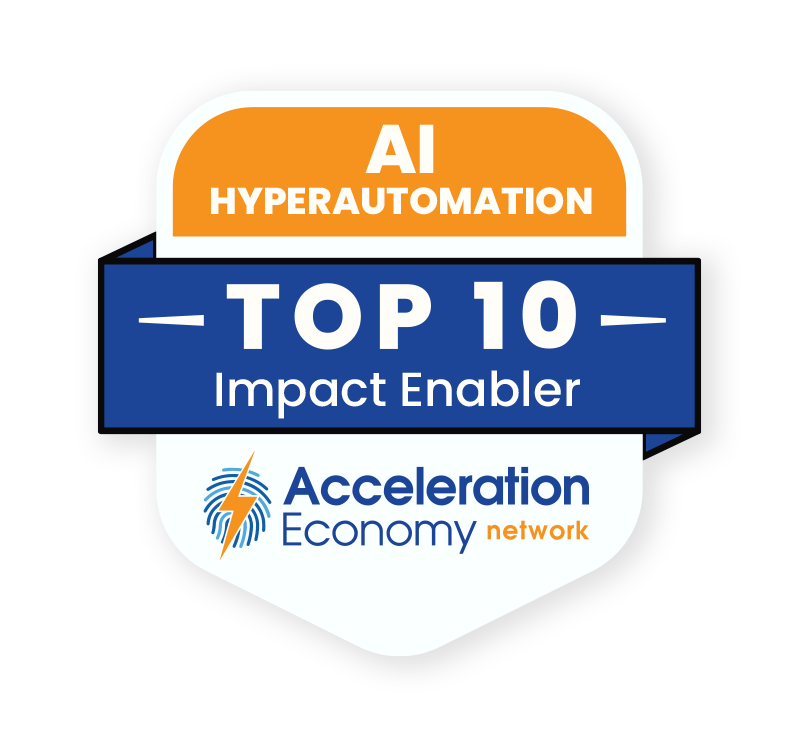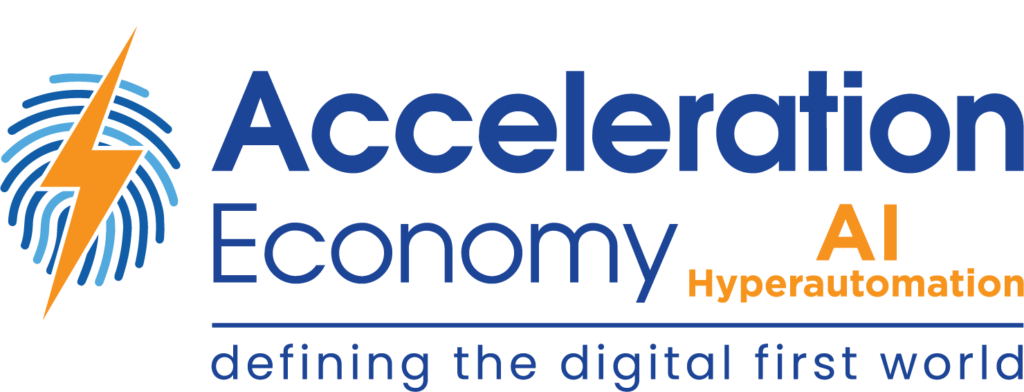New technologies often overlap and work together to drive more value for end users or businesses than they would individually.
As I progress in my journey of running a startup that builds augmented reality (AR) experiences, I’m discovering more ways that the technology can be combined with artificial intelligence (AI) to not only make more immersive experiences for the user but also create compelling AR experiences with real-world applications.
I’ve written previously about the implications of generative AI for all creative fields, including AR. In this analysis, I’ll focus on AI from the enterprise perspective. In particular, I want to zero in on how AR can make AI and data more actionable and more contextualized into a user’s environment.
How AI and Humans Work Together
Before looking at how AI can supercharge AR, it’s important to understand how AI, which operates on data, works together with humans to automate business processes.
On the Acceleration Economy AI/Hyperautomation channel, we often focus on how new robotic process automation (RPA) or automation platforms improve back-end data processes for organizations, from managing supply chain analytics and customer relationship management (CRM) to tracking and outsourcing patient records for hospitals, and much more.
Many automation platforms carry out tasks based on back-end data, but they still need humans to solve unforeseen problems or push a project to 100% completion. In the supply chain example, automation platforms help with tracking and reordering parts for manufacturing firms, but they don’t assemble all the components automatically and give the final check on the factory floor. Every business is still run by people, no matter how much it has been automated.
Factories of the Future
Because humans are prone to error and have limitations on how much data can be analyzed when making decisions, they need other technologies to enable what I call “full-stack automation.” Immersive technology like AR is one way businesses can present back-end data that’s been aggregated and analyzed by automation platforms in a user-friendly way, helping human stakeholders make better decisions with the data. In other words, we can leverage immersive technology as a new interface for operational processes that require a mix of humans and AI to become more efficient.
Which companies are the most important vendors in AI and Hyperautomation? Click here to see the Acceleration Economy Top 10 AI/Hyperautomation Short List, as selected by our expert team of practitioner-analysts
Manufacturing presents a prime example of an industry where AI and AR can work together for better results. Modern factories are already jammed with sensors and powered by data, but how do the human stakeholders benefit from that data? Most of it is stashed away in a database, powering automated functions that most people in the business don’t even know about.
The last thing we want is to automate further and further until we create a black box and lose track of what’s really happening. Instead, we need to help human stakeholders gain strong oversight of the data and automated processes running in background. In the context of physical work environments like factories, hospitals, construction sites, transportation, event management, and more, this is where immersive tech like AR comes in.
For example, imagine a building manager who needs to deal with issues with the building’s piping. They might employ a tablet or AR headset tied into automation platforms that contain real-time Internet of Things (IoT) data like pipe pressures, flow rates, and temperatures. That data is presented in an engaging way that helps the building manager find the sources of error and make repairs in the system. Problem points can be highlighted in a user’s real environment, letting them solve the problem much more quickly.
For factories, AR headsets can use computer vision to track inventory levels actually present on shelves, identify issues on the factory floor, or even help employees navigate the factory environment if they’re a recent hire. Data pulled from sensors on a pair of AR headsets can then be fed into a back-end automation platform.
If the headset recognizes low parts inventory on a shelf, it automatically updates inventory counts and orders a resupply. Issues that the AI platform identifies, such as an electrical malfunction that could impact the manufacturing process, can be communicated directly to someone in charge using AR.
Case study: AI Helps Manufacturing Industry Customers
C3 AI, one of Acceleration Economy’s AI/Hyperautomation Top 10 companies, provides turnkey AI applications and automation solutions for enterprises. Its customers include manufacturing companies looking to streamline their supply chain.
One of C3 AI’s customers builds aircraft engines and other aviation products. The manufacturer has 90 major product lines with variations that all together require thousands of parts from hundreds of suppliers across the globe. According to a C3 AI case study, the customer was working with six different legacy supply chain systems and maintained roughly $600 million in parts inventory, $400 million of which was fast-moving inventory. C3 AI’s automation platform helped the manufacturer tie together data from the various supply chain systems, identifying between $180 million to $240 million in inventory that could be reduced and predicting supplier delays with 80% accuracy. In the end, the manufacturer reduced inventory by 30% to 40%.
I believe AR could play a valuable role in a use case like this one. How do employees in this company identify if a part is redundant or incorrect, for example? And how can any supplier delays be reduced by sharing data from the factory with those suppliers? AR could help by letting the manufacturer identify what’s actually happening on the factory floor and using data from the back-end database to give employees or partners visibility they need to take actions.
Conclusion
As the use of AI continues to increase within organizations, more and more data will be produced and plugged into automated functions, but it’s not much help if it can’t people aren’t able to understand it and act on it. There’s a need to explore ways of visualizing this wealth of data being fed into AI systems to act on it in a meaningful way. I believe AR can be a viable solution in a variety of use cases, including many on the factory floor.
Looking for real-world insights into artificial intelligence and hyperautomation? Subscribe to the AI and Hyperautomation channel:













